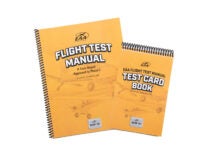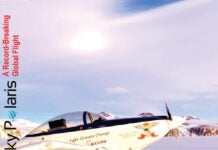Sport Pilot Airplane
A Book Report by Bob Fritz
There’s an old newspaper adage that states every story should clearly lay out the who, what, where, why, when and how. Its not often we find a book that covers all these bases when dealing with a subject as new as Light Sport Aircraft. But a scan of the Table of Contents in Carol and Brian Carpenters new book gives a hint of the breadth: 30 pages on Selecting an Aircraft, 11 pages on Establish a Budget, 60 pages on Pilot and Aircraft Requirements with a significant remainder devoted to Meteorology and Aerodynamics.

The depth of the book, especially in the areas of meteorology and aerodynamics, is what sets it apart from those we’ve all used in ground school. Where those books, quite rightly, assume the reader is going to fly aircraft weighing more than 1500 pounds and perhaps transition to high-performance wings, Sport Pilot Airplane looks at the subjects of weather and flying characteristics from a light aircraft point of view.
The differences are significant. For instance, few of us are so over-confident that we would, after a few hundred hours in a Cessna 172, assume that shifting to a Lancair IV-P would be a case of a quick checkride. However, Sport Pilot Airplane makes it clear that while the speeds are lower in Light Sport Aircraft, the fact of their higher drag and lower inertia also make transitioning to them an experience requiring additional knowledge.
This is clearly illustrated in the section describing NODI or Nose Over Dive In, a situation where a loss of power combined with an aft c.g., high drag and low inertia can cause an outside loop, an exciting event at the minimum.
The Carpenters bring a long list of letters after their names, such as A&P, DAR, IA, CFII, all useful when they give step-by-step instructions on filling out FAA paperwork. It was especially amusing and enlightening to feel them at ones elbow with cautions such as, Too much paperwork will only confuse the FAA registry and cause you additional grief.
Of special significance are the passages concerning pilots who can no longer fly as a Private Pilot due to medical issues as well as those who wish to move up from ultralight aviation.
If there’s a flaw here, its the too-frequent typographical errors, which are distracting, and the occasional low contrast between the text and the gray background over which its printed.
In spite of this, however, Sport Pilot Airplane will be illuminating for all pilots with even the most casual interest in LSA. It can be obtained directly from the authors via their web site at www. rainbowaviation.com.













